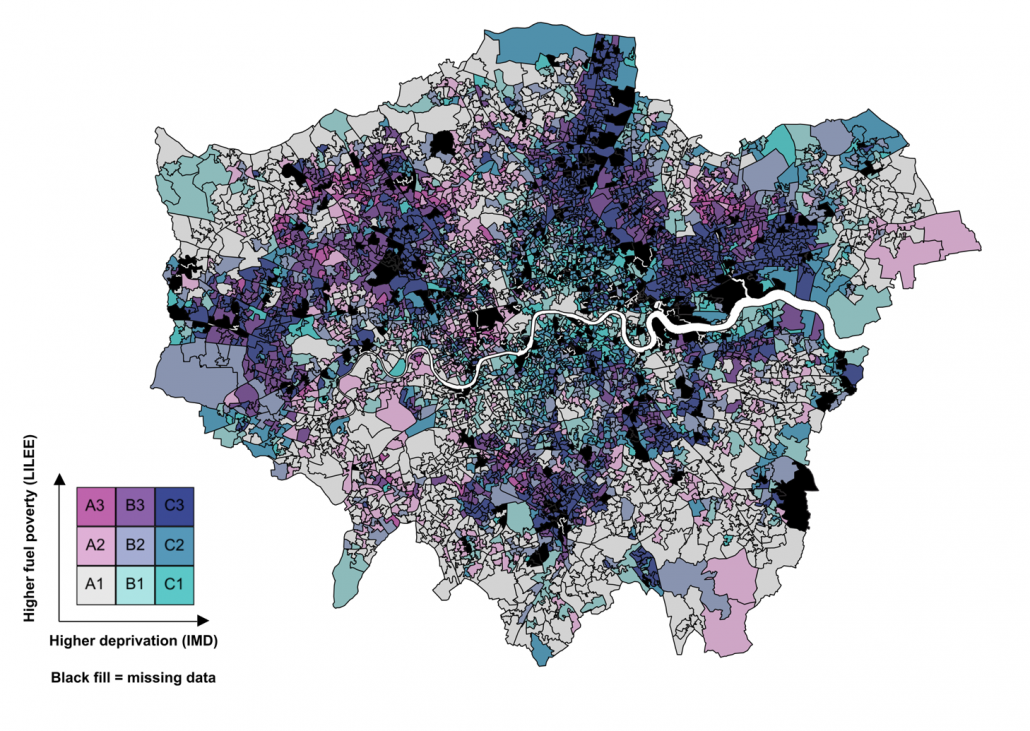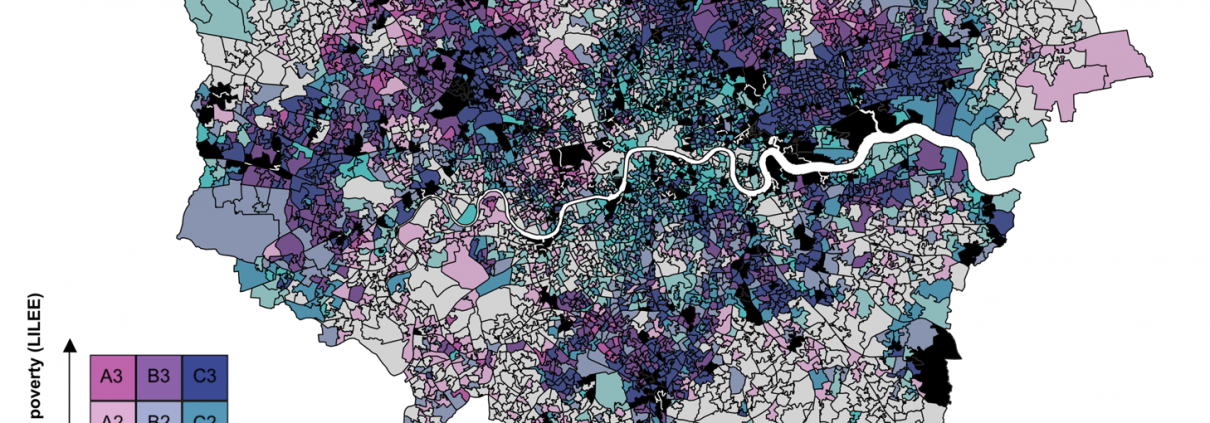An empirical critique of the low income low energy efficiency approach to measuring fuel poverty
This study explores the efficacy of the UK Government’s current approach to measuring fuel poverty: the Low Income Low Energy Efficiency (LILEE) metric. The controversial LILEE metric, adopted in 2019, drastically changed the criteria for measuring fuel poverty; such that a household is only considered fuel poor if residual household income falls below the poverty line following energy expenses and the property has an EPC rating of D, E, F or G. This effectively omits all EPC A–C rated homes (around 40% of all homes in England) from fuel poverty statistics, hence, those in more “efficient housing” are considered not fuel poor by default, regardless of household income or changes in energy costs. Anecdotally, there has been criticism of the LILEE approach, particularly regarding the blanket omission of EPC A–C homes, however, there is a lack of studies quantifying these issues. In this study, we aim to investigate the difference between LILEE fuel poverty rates and the rate of energy insecurity (i.e., the self-reported ability of people/households to afford sufficient energy, without sacrificing other necessities, e.g., food).
This project aimed to explore the efficacy of the UK Government’s current approach to measuring fuel poverty by gathering empirical evidence of the LILEE metric’s shortcomings (the Low Income Low Energy Efficiency metric adopted in 2019), as well as quantifying them by comparing LILEE statistics to a related condition, energy security. This required a two-stage analysis of LILEE fuel poverty in the case city of London, UK. Stage 1 included the integration of various publicly accessible datasets (including EPC, employment and income data) to spatially analyse LILEE fuel poverty, as well as estimating the energy efficient (EPC A–C), yet financially vulnerable, homes omitted from LILEE by default. Stage 2 included the design and deployment of a survey in London to gauge food and energy security (n=2886). The survey window spanned November–December 2022, and was disseminated among users of the OLIO food-sharing app.
The analysis of the metric was split into two stages: i) the spatial analysis of fuel poverty (according to LILEE), followed by an estimation of the financially vulnerable households omitted by default, due to having an EPC rating of A–C; and ii) the survey data analysis and modelling. For stage 1, a bivariate mapping approach was adopted to visualise the discrepancy between LILEE fuel poverty and deprivation (as shown in Figure 1) in LSOAs (small geographical areas) across Greater London. EPC, employment and income data were then integrated to provide a crude estimate of the EPC A–C rated, financially vulnerable homes omitted from LILEE statistics. Stage 2 included an exploratory analysis of the survey data, followed by a more sophisticated modelling approach. The modelling approach adopted was the Random Parameters Ordered Probit (RPOP), allowing the exploration of the sociodemographic and behavioural factors that significantly influenced energy security in winter 2022.
The spatial analysis of London exposed discrepancies between deprivation and expected fuel poverty incidence (see Figure 1), demonstrating that a significant proportion of households are currently classed as “not fuel poor” (4.4% of the city’s stock, around 171,091 households) but remain likely to be energy insecure. Subsequently, we analysed primary survey data (n=2886) collected in London. 28.2% of respondents were energy insecure, which is 145% (or 2.5x) higher than the LILEE estimate for London. Surprisingly, no significant variation in energy insecurity rates was found between the most and least efficient homes surveyed, casting significant doubt on the inclusion of EPC rating as an essential fuel poverty criterion.
The RPOP model estimation results revealed the key characteristics of respondents impacting energy security in London. In terms of policy implications, we suggest that the LILEE metric is succeeded by a metric that does not include a building efficiency criterion (such as EPC) and focuses more on the issues that perpetuate energy insecurity, which according to our analysis are: household income, composition, the presence of a prepayment meter, health problems or disabilities, and other types of poverty, namely, food insecurity.

Figure 1. Bivariate choropleth map of Greater London: fuel poverty (LILEE) and IMD per LSOA
An empirical critique of the low income low energy efficiency approach to measuring fuel poverty
Fuel poverty is a complex socioenvironmental issue of increasing global significance. In England, fuel poverty is assessed via the Low Income Low Energy Efficiency (LILEE) indicator, yet concerns exist regarding the efficacy of this metric given its omission of households based on Energy Performance Certificate (EPC) ratings, rather than the ability of occupants to afford energy. To assess the potential shortcomings of the LILEE metric, we perform quantitative analyses of fuel poverty and energy security in London, UK. … [more]



